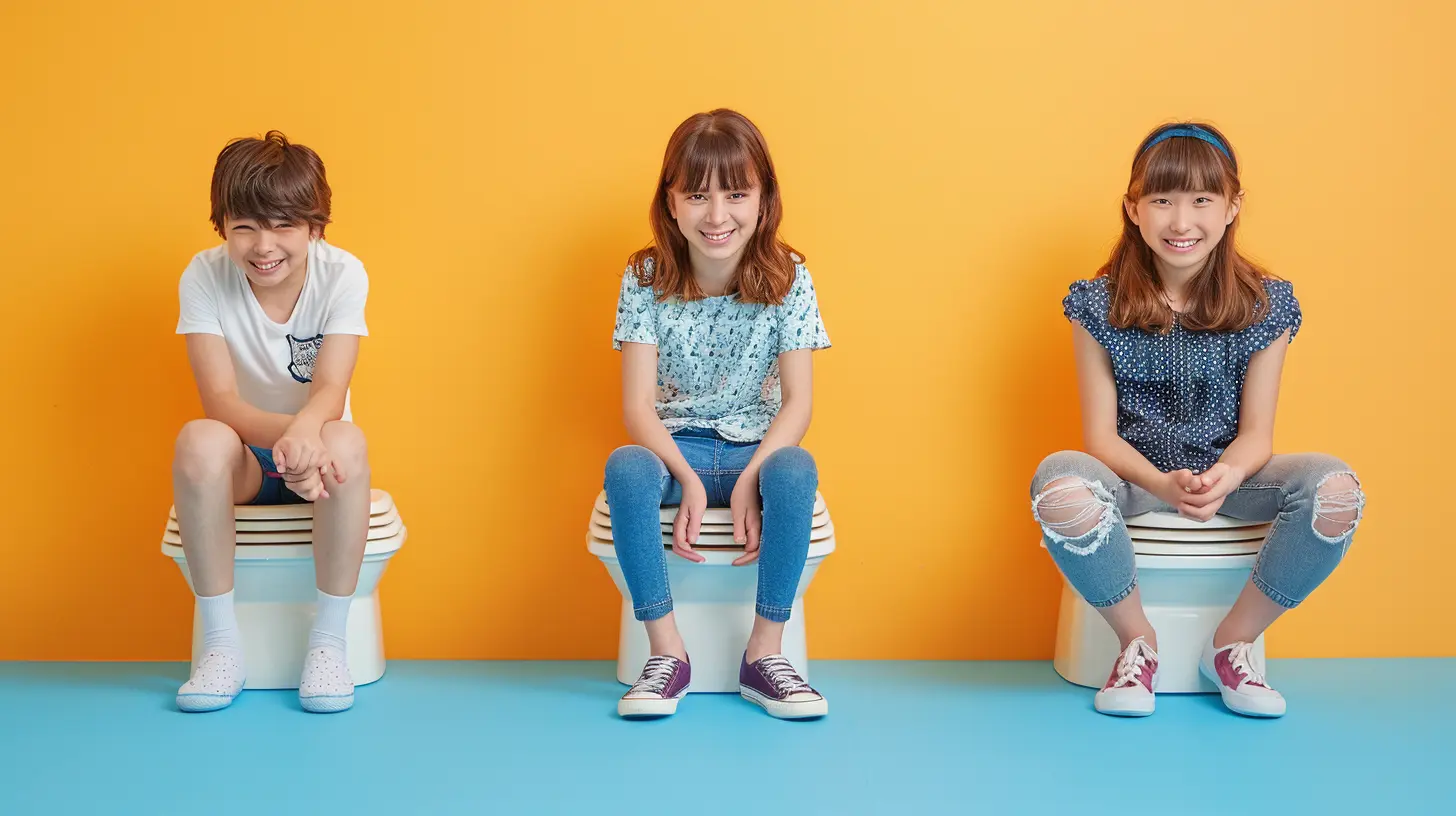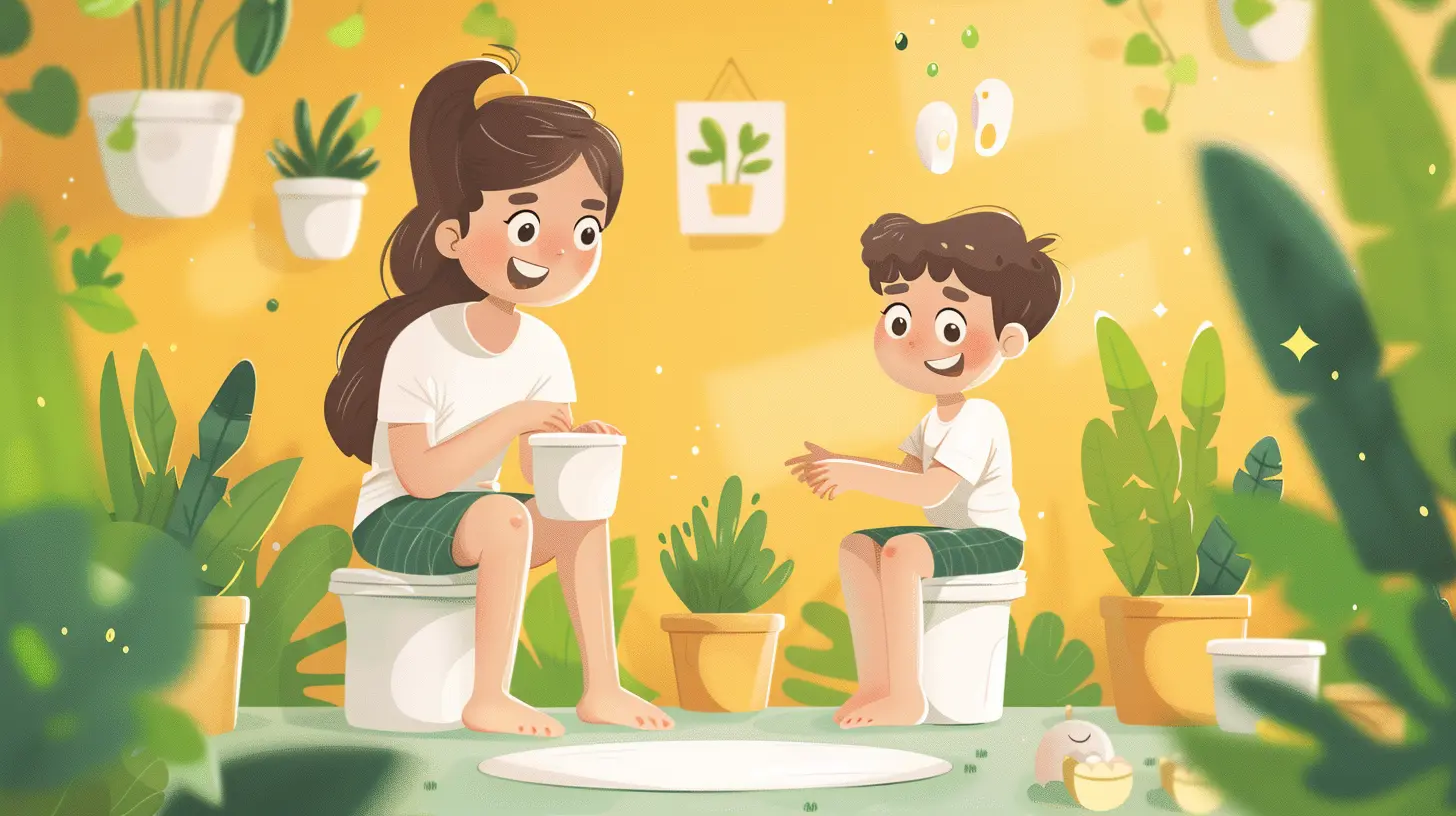Potty Training Without Tears: Positive Parenting Techniques
19 June 2025
Potty training can feel like a huge hurdle, can’t it? There you are, juggling a million parenting tasks, and now you're supposed to teach your toddler to use a toilet too. It’s a rite of passage, for sure—but it doesn’t have to be a battle. That’s where positive parenting comes in.
This gentle, encouraging approach helps build trust, confidence, and—believe it or not—makes potty training smoother and a lot less tear-filled. So, if you’re dreading the toilet training phase or knee-deep in accidents and frustration, stick around. Let’s walk through how you can potty train your child calmly, kindly, and confidently.
Understanding The Right Time to Start
One of the biggest reasons potty training turns into a power struggle is starting too early. Parents often feel pressure—like it’s a race. But here's the thing: every child unfolds at their own pace.So, when is your child ready?
Watch for these signs:- They’re staying dry for longer periods
- They’re curious about the toilet
- They can follow simple instructions
- They dislike wet or dirty diapers
- They’re able to pull their pants up and down
If your child isn’t ticking most of these boxes, it’s okay to wait a few more weeks—or even months. There’s no Olympic gold medal for the youngest potty trainee on the block. Pushing too soon often backfires.
Why Positive Parenting Works for Potty Training
Let’s be honest—no one learns well under pressure, especially toddlers. Positive parenting focuses on mutual respect, patience, and encouragement. This method doesn’t bribe or shame your child into using the potty. Instead, it teaches through connection and trust.Here’s what that looks like in practice:
- You praise effort, not just success
- You remain calm during accidents
- You model the behavior you want to see
- You build routines that support learning
Imagine you're teaching your child a new dance move. You wouldn't yell at them for getting the steps wrong, right? You’d smile, guide, and cheer them on. Potty training should be just like that.
Creating a Potty Training Toolkit
Before diving in, gather your gear. Preparation makes everything easier.Essentials include:
- A child-sized potty or a potty seat adapter- Step stool (for access and comfort)
- Easy-to-remove clothing
- Training pants or underwear
- Books or songs about potty time
Think of this toolkit like your potty training “treasure chest.” It’s not just about having the stuff—it’s about making the whole idea of bathroom visits interesting and fun.
Start With Potty Play
Yes, you read that right. Before you aim for results, let your child explore the potty without any pressure. Let them sit on it fully clothed. Make it part of their routine—even if nothing happens yet.Use dolls or stuffed animals to “demonstrate” going potty. Read potty training storybooks. Watch videos together. These playful introductions take the mystery and fear out of the process.
The goal here is familiarity without force.
Building a Routine (Without the Drama)
Kids thrive on predictability. So, setting a schedule can really help here—but it should be flexible.Try this gentle rhythm:
1. Morning potty time – right after waking up.2. Before and after meals
3. Before leaving the house
4. Before naps and bedtime
Don’t keep asking, "Do you need to go?" every 10 minutes. That can annoy or stress your child. Instead, use encouraging phrases like:
- "Let’s try sitting on the potty for a minute."
- "It’s potty time—just like we practiced!"
And remember: accidents are part of learning. Don’t make it a big deal. Just clean up with love and move on.
Encouragement Over Rewards
We get it—stickers, candy, and applause can be tempting tools. And while small incentives can occasionally help, be cautious about over-relying on them.Instead, focus on building your child’s intrinsic motivation. Praise effort over outcome.
Say things like:
- "You’re really listening to your body—great job!"
- "That was a smart decision to go potty before we left!"
This kind of encouragement helps your child feel proud from the inside. That’s where true confidence grows.
Dealing With Setbacks (Gracefully)
Regression during potty training? Totally normal. Maybe there’s a new sibling, a move, or just an off day. It happens.Here’s how to handle it:
- Stay calm and patient
- Avoid shaming or scolding
- Revisit routines and cues
- Offer extra support and cuddles
Think of setbacks as pit stops—not the end of the road. You’re not going backward. You’re just taking a pause and collecting yourself before the next stretch.
Nighttime Potty Training: The Slow Lane
Daytime dryness usually comes before nighttime. And that’s okay.Some kids take months or even years to stay dry at night. It’s often due to physical development—not effort.
Here’s what helps:
- Limit liquids an hour before bed- Take one last potty trip before lights out
- Use mattress protectors for easy cleanup
- Avoid guilt if they wake up wet—just reassure and reset
Celebrate little wins, and know that dry nights will come when your child’s body is ready.
Common Mistakes to Avoid (And What to Do Instead)
Even the most loving parents can fall into these traps. Don’t beat yourself up—just adjust and keep going.Mistake 1: Comparing your child to others
Instead: Focus on your child’s unique timelineMistake 2: Punishing accidents
Instead: Offer reassurance and calmly guide themMistake 3: Rushing the process
Instead: Let your child lead and follow their cuesMistake 4: Using the potty as a power struggle
Instead: Keep potty time low-pressure and routine-drivenReal-Life Tips From Real Parents
Sometimes, the best advice comes from those in the trenches. Here are a few gems collected from seasoned parents:- “Let them run around bottomless when at home—it helps them recognize the sensation.”
- “Put a potty in every bathroom, and even in the car for emergencies!”
- “Celebrate dry days with a happy dance. Keep it light and fun.”
- “Don’t forget to pack extra clothes... every time you leave the house.”
Every parent finds their rhythm. You will too.
When to Seek Extra Support
If your child shows signs of constipation, fear of using the toilet, or complete resistance for weeks, it might be worth chatting with your pediatrician. Sometimes underlying physical or emotional needs need attention.Remember: asking for help is a strength, not a failure.
Potty Training Is a Journey, Not a Sprint
Let’s zoom out for a second—potty training is just one piece of your parenting puzzle. It doesn’t define your worth as a parent or your toddler’s intelligence.Using the positive parenting approach means trusting yourself, trusting your child, and moving forward with patience and love. Will there be messes? Absolutely. But there’ll also be big celebrations for tiny victories.
Take a deep breath, trust the process, and give yourself credit. You’ve got this.
Final Thoughts: Taking the Tears Out of Toilet Time
Potty training doesn’t have to be a dramatic saga filled with frustration and tears. It can actually be a bonding experience—one where your child learns not just how to use the potty, but how to trust their body and your guidance.With patience, positivity, and a healthy dose of humor, you’re setting your little one up for success—not just in the bathroom, but in life.
And one day soon, you’ll look back and smile, realizing the potty phase was just another beautiful (and messy) milestone in your parenting adventure.
all images in this post were generated using AI tools
Category:
Potty TrainingAuthor:

Max Shaffer
Discussion
rate this article
2 comments
Liam McBride
What a refreshing approach to potty training! I'm intrigued by the positive techniques shared here. Can’t wait to try these methods with my little one and make this experience enjoyable!
September 22, 2025 at 3:11 AM

Max Shaffer
Thank you! I'm glad you found the techniques helpful. Wishing you and your little one a joyful potty training journey!
Indigo Cross
Potty training doesn’t have to be a battle! With a dash of patience and a sprinkle of humor, this approach transforms potential tears into giggles. Celebrate the small victories and embrace the journey—after all, every little one eventually masters this rite of passage, often with a little cheerleading!
June 26, 2025 at 4:48 AM

Max Shaffer
Absolutely! Embracing patience and humor makes potty training a joyful experience. Celebrating small wins encourages both kids and parents on this journey.


